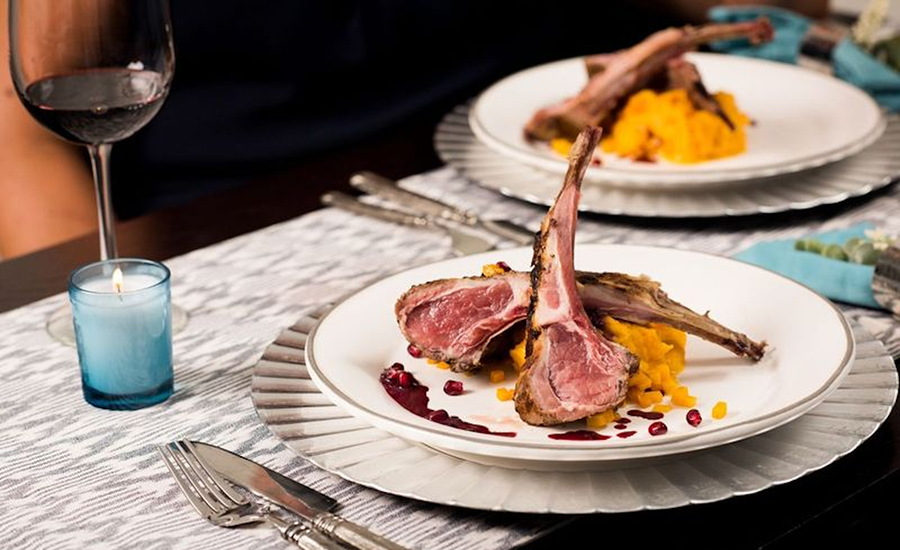Lamb occupies a growing niche in the US protein diet. Overall lamb consumption is projected to be up slightly in 2025, projected by Steiner Consulting at 0.53kilos (about 1.17 pounds) per capita, up 8% over 2024 and notably up for the 4th consecutive year according to USDA data. At retail, both volume and dollar sales increased over 10% in the latest 52-week average (as of August 2025). Considering the overall environment of inflation and low-confidence consumers, this is a strong signal of demand. The overall surge in interest in protein – consumers can’t get enough of it in all forms – is certainly part of this, but lamb has particular attributes that are attracting consumers.
A social listening study undertaken by Menu Matters for Meat & Livestock Australia (MLA) last year showed a slight uptick in online conversations about lamb over the prior year. There were significant spikes in conversation around holiday periods, not just at Easter but also Thanksgiving and Christmas. Notably, away from home experiences show up in the social listening study as an important factor. As restaurants tend to deliver positive experiences with lamb, foodservice adoption and menuing of lamb helps consumers build familiarity and preference. Add in storytelling and certifications for pasture-raised, grass-fed or halal that Australian lamb brings to the meat case and the menu, and you start to see the power of provenance. Both in foodservice and at home, lamb’s ability to add a touch of affordable luxury, specialness and something different than the everyday occasion is its superpower.
Indeed, menu data shows lamb remains strongest at independent restaurants, but exhibiting menu growth and versatility in casual dining restaurants and regional chains. Lamb is no longer exclusive to independent fine dining. Food & flavor trends play into this as well – Indian, mediterranean and middle eastern restaurants are most likely to menu lamb, and are trending cuisines with established and growing populations here in North America. Among more common restaurant types, steakhouses and Italian restaurants are most penetrated by lamb. These restaurants are often using value cuts of lamb from ground to leg and shoulder, and often in more approachable, familiar ways. Think lamb pastas, stews and curries, and also the surprising growth engine of sandwiches, where new entrants in lamb charcuterie may be making headway.
To be clear, while we are seeing more on-menu and at-home usage of lamb outside of the rack, in that same listening study, lamb chops remain the most-talked about lamb cut, both in terms of away-from-home menuing and at-home dining. It’s an iconic cut with upscale appeal, and easy to prepare with confidence at home.
So Americans are eating more lamb – where is it coming from? Domestic supplies are up slightly after a long decline is production, but represent less than a third of the total. Imports set a record for volume in 2024, and are led by Australia, which contributes just under 75% of the imported lamb, and about three times the volume from runner-up New Zealand. This trend is likely to continue, as imports are needed to meet the gap between domestic production and demand.
Looking ahead in the lamb category, new entrants are carving out a space for premium lamb, based on specialized breeds and feeding regimes for maximum eating quality. The obvious analog of wagyu in the beef category applies here, including an emphasis on intramuscular fat with a low melting point, and mild flavor from lanolin-less breeds. More value-added lamb products are also coming into distribution, from lamb hams and pastramis, to pre-marinated or cooked lamb cuts. The value of convenience plays both in foodservice and at retail, and when combined with that special, premium appeal of lamb, there’s a lot to like about the future for these products on the market.
